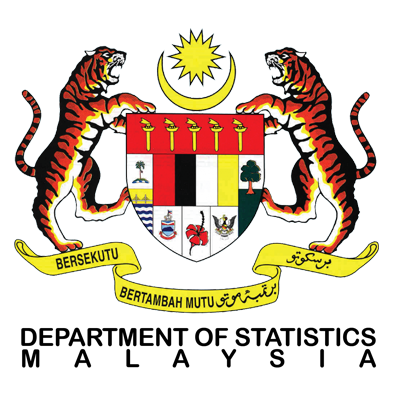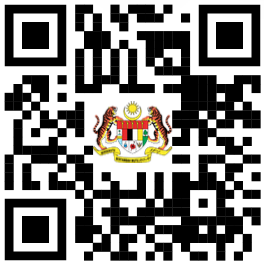Malaysia External Trade Statistics
- Home
- Statistics
- Economy
- External Sector
- Malaysia External Trade Statistics
Malaysia External Trade Statistics January 2020
Malaysia External Trade December Statistics 2019 3 January 2020
Malaysia External Trade Statistics November 2019 4 December 2019
Malaysia External Trade Statistics October 2019 4 November 2019
Malaysia External Trade Statistics September 2019 4 October 2019
Malaysia External Trade Statistics August 2019 4 September 2019
Malaysia External Trade Statistics July 2019 Show all release archives
Overview
 ?
?
KEY FACTS
- Malaysia’s exports in January 2020 posted a decline of 1.5% year-on-year (y-o-y) to RM84.1 billion. Re-exports was valued at RM16.3 billion which dropped 6.7% and accounted for 19.4% of total exports. Domestic exports decreased marginally RM141.5 million or 0.2% to RM67.8 billion.
- Imports also fell 2.4% y-o-y to RM72.1 billion.
- On a month-on-month (m-o-m) basis, exports decreased RM2.3 billion (-2.7%) from RM86.4 billion. In seasonally adjusted terms, exports registered a decline of 1.3%.
- On a m-o-m basis, imports posted a decrease of RM1.8 billion (-2.4%) from RM73.9 billion. In seasonally adjusted terms, imports fell 0.9%.
- On a y-o-y basis, export decrement was attributed to contraction in exports to Thailand (-RM1.1 billion), Hong Kong (-RM907.2 million), the European Union (-RM642.6 million) and China (-RM623.5 million). However, exports rose to the United States (+RM754.2 million), Switzerland (+RM306.2 million) and Indonesia (+RM261.6 million).
- On a y-o-y basis, lower imports were mainly from China (-RM1.9 billion), Thailand (-RM872.8 million), Taiwan (-RM737.9 million) and Brazil
(-RM471.3 million). Meanwhile, higher imports were from the United States (+RM1.4 billion), Australia (+RM496.6 million) and Republic of Korea (+RM410.8 million).
TRADE
Total trade amounted RM156.2 billion, shrank 2.0% or RM3.1 billion. It also posted a drop of RM4.1 billion or 2.6% when compared to December 2019. The trade surplus which was valued at RM12.0 billion, rose RM484.4 million (+4.2%) from a year ago. However, it registered a decrease of RM496.1 million or 4.0% as compared to the previous month.
EXPORTS
On a y-o-y basis, exports decreased 1.5% to RM84.1 billion. The main products which attributed to the decrease were:
- Electrical and electronic (E&E) products which accounted for 38.6% of total exports, decreased RM1.9 billion or 5.5% to RM32.4 billion;
- Liquefied natural gas (LNG), which accounted for 4.7% of total exports shrank RM1.2 billion or 22.8% to RM4.0 billion due to the decrease in both export volume (-12.2%) and average unit value (-12.0%);
- Crude petroleum (2.6% of total exports) dropped RM268.8 million or 10.9% to RM2.2 billion due to the decrease in export volume (-22.0%) as average unit value increased 14.3%;
- Timber and timber-based products (2.3% of total exports) declined RM123.0 million or 5.9% to RM2.0 billion; and
- Natural rubber (0.3% of total exports) dropped RM1.4 million or 0.5% to RM273.7 million due to the decrease in export volume (-8.0%) as average unit value increased 8.1%.
However, higher exports were recorded for the following products:
- Refined petroleum products, which contributed 7.1% to total exports, shot up RM2.3 billion or 62.0% to RM6.0 billion due to the increase in both export volume (+51.1%) and average unit value (+7.2%); and
- Palm oil and palm oil-based products (6.5% of total exports), increased RM67.0 million (+1.2%) to RM5.5 billion due to the increase in exports of palm oil-based oleochemical (+RM43.0 million, +3.2%) and palm kernel oil (+RM28.6 million, +9.5%). However, exports of palm oil dropped RM24.5 million or 0.7% due to the decrease in export volume (-25.5%) as average unit value increased 33.3%.
On a m-o-m basis, exports slipped RM2.3 billion (-2.7%) from RM86.4 billion. The main products which attributed to the decrease were:
- Palm oil and palm oil-based products decreased RM318.5 million or 5.5% from RM5.8 billion. Exports of palm oil shrank RM307.8 million or 8.7% due to the decrease in export volume (-15.5%) as average unit value increased 8.1%;
- Crude petroleum decreased RM300.2 million or 12.0% from RM2.5 billion due to the decline in export volume (-15.6%) as average unit value increased 4.2%;
- Refine petroleum products fell RM172.6 million or 2.8% from RM6.1 billion due to the lower export volume (-3.0%) as average unit value increased 0.2%;
- imber and timber-based products dropped RM67.2 million or 3.3% from RM2.0 billion; and
- Natural rubber declined RM20.0 million or 6.8% due to the decline in export volume (-9.3%) as average unit value increased 2.7%;
However, increases were recorded for the following products:
- E&E products, rose RM1.4 billion or 4.4% from RM31.1 billion; and
- LNG grew RM429.7 million or 12.1% from RM3.6 billion due to the increase in both export volume (+10.2%) and average unit value (+1.7%).
Exports to Country of Destination
The two major destinations for Malaysia’s exports in January 2020 were Singapore and China.
Exports to Singapore amounted to RM12.3 billion, which accounted for 14.6% of total exports, increased RM108.0 million (+0.9%) as compared to the previous year. The main product which attributed to the rise was refined petroleum products, which contributed 15.2% of total exports surged RM933.7 million to RM1.9 billion. However, export of crude petroleum decreased RM414.8 million or 82.9% to RM85.5 million.
Exports to China were valued at RM10.4 billion, which accounted for 12.4% of total exports, declined RM623.5 million (-5.7%). The main product which attributed to the decrease was LNG, which contributed 5.4% of total exports dropped RM595.2 million (-51.5%) to RM560.7 million.
Seasonally Adjusted Export Value
On a m-o-m basis seasonally adjusted terms, exports decreased RM1.1 billion (-1.3%) to RM83.4 billion.
Exports, 2016-2020

IMPORTS
On a y-o-y basis, imports decreased RM1.8 billion or 2.4% to RM72.1 billion. The decrease in import was mainly attributed to capital goods and consumption goods.
- Capital Goods
Imports of capital goods, which accounted for 10.6% of total imports, dropped RM1.3 billion (-15.0%) to RM7.6 billion due to the decline in capital goods (except transport equipment) (-RM1.4 billion, -16.1%). However, transport equipment, industrial rose RM32.2 million (+7.0%).
- Consumption Goods
Imports of consumption goods which constituted 9.0% of total imports recorded a decrease of RM63.0 million (-1.0%) to RM6.5 billion. The drop was mainly attributed to semi-durables (-RM131.8 million, -10.0%) and durables (-RM29.1 million, -3.4%). However, imports of food & beverages, processed, mainly for household consumption increased
RM64.6 million or 6.4%.
- Intermediate Goods
Intermediate goods which constituted 53.9% of total imports rose RM1.4 billion (+3.7%) to RM38.9 billion. The increase was mainly contributed by fuel & lubricants, primary (+RM998.5 million, +28.9%), industrial supplies, primary (+RM639.4 million, +31.2%) and parts & accessories of capital goods (except transport equipment) (+RM489.7 million, +5.3%). However, industrial supplies, processed decreased RM1.1 billion (-6.6%).
On a m-o-m basis, imports decreased RM1.8 billion or 2.4% from RM73.9 billion. The decrease in imports by end use was attributed to intermediate goods, capital goods and consumption goods.
- Intermediate Goods
Imports of intermediate goods shrank RM3.1 billion (-7.3%) from RM41.9 billion. The main component attributed to the decrease was parts & accessories of capital goods (except transport equipment) (-RM2.8 billion, -22.5%), industrial supplies, processed (-RM527.1 million, -3.2%) and industrial supplies, primary (-RM407.6 million, -13.2%). Nevertheless, imports of fuel & lubricants, primary recorded an increase of RM692.6 million (+18.4%).
- Capital Goods
Imports of capital goods decreased RM965.2 million (-11.2%) from RM8.6 billion due to the decrease in both capital goods (except transport equipment) (-RM791.0 million, -10.0%) and transport equipment, industrial (-RM174.2 million, -26.1%).
- Consumption Goods
Imports of consumption goods registered a decrease of RM365.6 million (-5.4%) from RM6.8 billion. The decrease was due to semi-durables (-RM181.3 million, -13.2%), food & beverages, processed, mainly for household consumption (-RM138.8 million, -7.6%) and durables (-RM123.5 million, -13.0%).
Imports by Country of Origin
The two main sources of Malaysia’s import in January 2020 were China and Singapore.
Imports from China which registered RM16.0 billion, shrank RM1.9 billion (-10.6%) when compared to January 2019. The main products which contributed to the decrease were:
Refined petroleum products (6.8% of total imports), decreased RM481.0 million or 30.7% to RM1.1 billion;
Mechanical handling equipment and parts, which contributed 0.8% of total imports slipped RM250.7 million or 65.1% to RM134.5 million; and
Motor cars and other motor vehicles for the transport of persons, which contributed 0.4% of total imports dropped RM205.8 million or 78.4% to RM56.5 million.
Imports from Singapore amounted to RM7.5 billion decreased RM71.7 million (-0.9%) from a year ago. The main product which attributed to the decrease was E&E products (32.5% of total imports), decreased RM236.4 million or 8.8% to RM2.4 billion.
Seasonally Adjusted Import Value
On a m-o-m basis seasonally adjusted terms, imports decreased RM643.8 million (-0.9%) to RM71.5 billion.
Imports, 2016-2020

MARKET SHARE
The following charts show Malaysia's major trading partners for January 2020.
Total Trade by Major Countries, Jan 2020, percentage share

Exports and Imports by Major Countries, Jan 2020, percentage share

The following charts show Malaysia’s trade with ASEAN countries for January 2020.
Exports, Jan 2020, percentage share

Imports, Jan 2020, percentage share

#Notes:
1. The January 2020 data is provisional and subject to revision in later issues.
2. This report can be accessed through the web portal of the Department of Statistics, Malaysia (https://www.dosm.gov.my) under section: Latest Release.
Released By:
DATO' SRI DR. MOHD UZIR MAHIDIN
CHIEF STATISTICIAN MALAYSIA
DEPARTMENT OF STATISTICS, MALAYSIA
![]() DrUzir_Mahidin
DrUzir_Mahidin ![]()
![]() Dr_Uzir
Dr_Uzir
4 MARCH 2020
Contact person:
Mohd Yusrizal Ab Razak
Public Relation Officer
Strategic Communication and International Division
Department of Statistics, Malaysia
Tel : +603-8885 7942
Fax : +603-8888 9248
Email : yusrizal.razak[at]dosm.gov.my
Subscribe
Newsletter
Subscribe to our newsletter and stay updated
For interviews, press statement and clarification to the media, contact:
Baharudin Mohamad
Public Relation Officer
Email: baharudin[at]dosm.gov.my
Phone: 03 8090 4681
Not found what you looking for? Request data from us, through
Go to eStatistik
Email: data[at]dosm.gov.my
Phone: 03 8885 7128 (data request)










